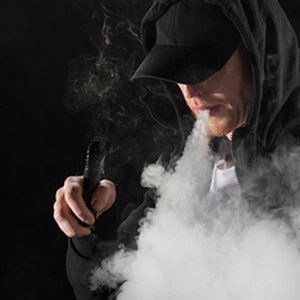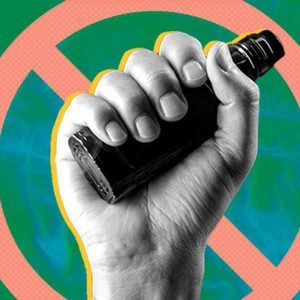Vape Laws Global Regulatory Trends and Best User Compliance Guide2025
E-cigarettes are growing in popularity at an alarming rate around the world, and with that comes an onslaught of regulatory measures from governments. The discussion around “Vape Laws” is not just about the industry, it’s about every user. Understanding the current status, differences and future direction of these regulations is critical for consumers, retailers and even manufacturers.
Vape Laws present a diverse global regulatory landscape
- There is no uniform template for regulating e-cigarettes globally, and Vape Laws vary significantly from country to country and even region to region. Such differences are directly reflected in the legality of the product, sales channels, restrictions on places of use, and tax policies, among other core aspects.
- In some countries, such as the United Kingdom, e-cigarettes are included in government-supported harm reduction strategies, are sold legally and are relatively easy to obtain, and are even found in the pharmacies of some public hospitals, where they are offered to smokers as an alternative to traditional cigarettes.
- In contrast, other countries such as Thailand, Singapore, and Brazil have implemented extremely strict Vape Laws that prohibit the sale, importation, or even possession of e-cigarette products, with violators potentially facing hefty fines or imprisonment.
- More countries, including the United States, China, and members of the European Union, have chosen a middle path: allowing e-cigarette sales but imposing strict Vape Laws to regulate them. These regulations typically cover key aspects such as product ingredient disclosure, nicotine concentration limits, advertising bans, packaging warning requirements, and prohibitions on sales to minors.

Vape Laws’ far-reaching impact on the market and users
Increasingly stringent Vape Laws are reshaping the global e-cigarette market and profoundly affecting user behavior.
Increased Market Concentration: High compliance costs (e.g. product testing, certification applications, taxes) are making it difficult for a large number of small and medium-sized brands and retailers to survive, and the market is concentrating its resources on large, well-funded companies with strong compliance capabilities.
Changes in Product Choice: Regulations such as flavor bans and nicotine limits (e.g., the EU TPD caps the volume and strength of tobacco oils) directly limit the variety of products available to consumers. In China, for example, users can only choose tobacco-flavored compliant products.
Difficulty and Increased Cost of Access: Online bans, licensing, and high excise taxes (e.g., in some U.S. states) drive up the difficulty of access and ultimately the cost of purchase. Reduced legal purchasing channels may also drive some users to unregulated black market products, posing unknown health and safety risks.
Restrictions on Use in Public Places: More and more jurisdictions are bringing e-cigarettes under traditional tobacco control, prohibiting e-cigarettes from being used in public places, workplaces, and even in certain outdoor areas, so users need to be mindful of specific Vape Laws in their local areas.
Vape Laws Compliance: Key Points for Users to Know
In the face of a complex regulatory environment, it is responsible for users to be aware of and comply with local Vape Laws.
Check Local Regulations: Before purchasing or using e-cigarettes, always check your country, province/state, or even city’s specific Vape Laws through official channels, which may cover core information such as minimum age of purchase, types of products allowed to be sold, and where they can be used.
Choose Legal Sources: Purchase products only from authorized retailers with proper licenses. Stay away from unknown online sellers or street vendors, as the quality and safety of products from illegal sources cannot be guaranteed.
Recognize Compliant Products: Check the packaging carefully when purchasing to make sure it complies with local Vape Laws. For example, in China, look for the “Tobacco Monopoly” logo on the package and the only tobacco flavor options available.
Protecting Minors: Do not purchase e-cigarettes for minors and keep your e-cigarette products safe from youth. Actively discourage youth from trying them.
Respect Restrictions on Use: Strictly follow the laws and regulations regarding where e-cigarettes can be used. The use of e-cigarettes is usually prohibited in places where smoking is prohibited. Consent should also be sought before use in private places.

The Future Evolution of Vape Laws
- Vape Laws around the world are still in a phase of rapid development and ongoing adjustment, and future trends warrant heightened attention.
- Flavor restrictions may become mainstream: In order to curb youth use, more countries and regions may follow the example of China and the U.S. to restrict or ban the sale of flavored e-cigarettes other than tobacco flavors.
- Nicotine Regulation Tightens: Restrictions on nicotine content limits, disposable product capacity, and device power output may be further tightened to reduce the addictiveness and potential risks of the products.
- Environmental Issues Taken Into Account: With battery and plastic pollution from disposable e-cigarettes a growing concern, future Vape Laws may include stricter Extended Producer Responsibility (EPR) requirements, or even outright restrictions or bans on the sale of disposable e-cigarettes.
- Tax Levers Commonly Applied: In an effort to raise revenue and discourage consumption, governments may generally impose higher specialty excise taxes on e-cigarette products.
- Long-Term Health Research Drives Policy: As scientific research on the long-term health effects of e-cigarettes continues, new evidence will directly influence the direction of future Vape Laws.
Understanding and complying with Vape Laws is an inescapable responsibility of e-cigarette users. The global regulatory environment is complex and increasingly stringent.
Paying attention to the latest regulatory developments in your country, purchasing compliant products through legal channels, avoiding underage exposure, and using them in permitted places are the cornerstones of safe and legal enjoyment of e-cigarettes for every e-cigarette user. The changing Vape Laws will continue to shape the future of the industry, so it’s important to keep an eye on them in order to make informed choices.
